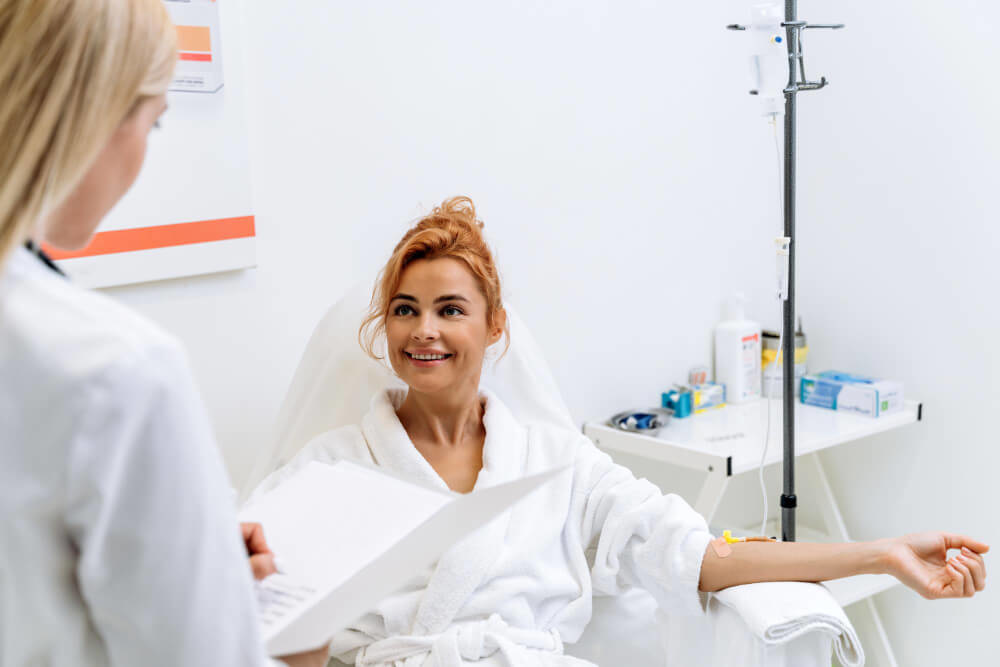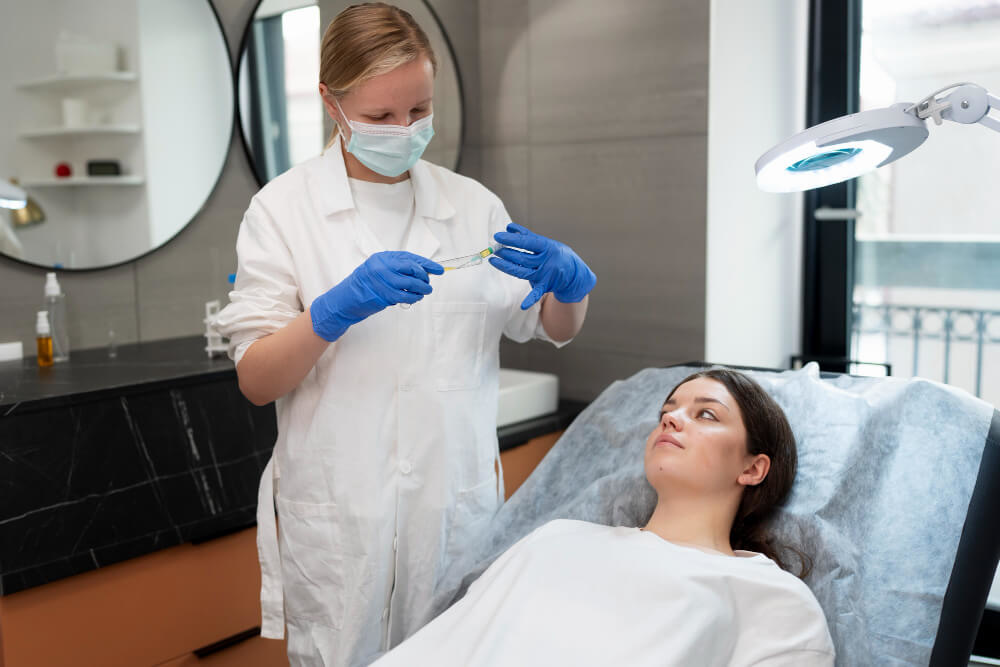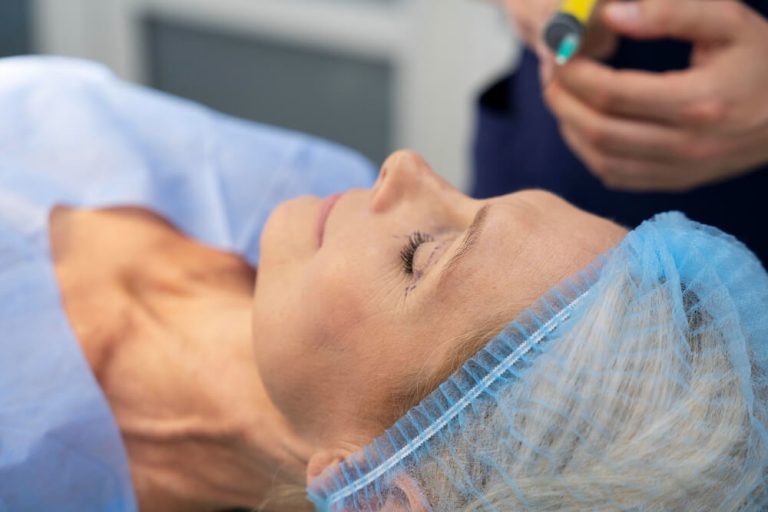The Ultimate Guide to Menopause Training: Reclaiming Your Strength and Vitality
Menopause is often discussed in hushed tones, framed by symptoms like hot flashes and mood swings. While these are real challenges, this perspective misses a bigger picture. This transition is a profound biological shift that invites a new approach to health, fitness, and overall wellbeing. It is a call to become more intentional about how we care for our bodies for the decades to come.
Instead of viewing it as an ending, we can see it as an opportunity to build a stronger, more resilient self. This is where the concept of menopause training becomes so powerful. It is not just about exercising; it is a strategic plan to work with your changing physiology, not against it. This approach helps you manage symptoms, protect your future health, and reclaim a sense of vitality.
Understanding and implementing a targeted plan is key to navigating this stage with confidence. A proper menopause training program considers the unique hormonal landscape of your body, focusing on specific goals like preserving muscle, strengthening bones, and managing stress. It is your roadmap to a healthier and more empowered second half of life.

Why Does Menopause Change Your Body So Much?
To understand why a new training approach is necessary, we must first understand the changes happening within. The menopause transition is primarily driven by a significant decline in key hormones, most notably estrogen. This single hormonal shift sets off a cascade of effects throughout the body.
Estrogen is a master regulator. It plays a role in everything from bone health and fat distribution to cognitive function and cardiovascular protection. As its levels drop, you may notice several changes. Your metabolism can slow down, making it easier to gain weight, particularly around the abdomen. This visceral fat is not just a cosmetic concern; it is metabolically active and can increase the risk of chronic disease.
Simultaneously, the body finds it harder to build and maintain lean muscle mass, a condition known as sarcopenia. Since muscle is a metabolic powerhouse, losing it further slows your metabolism. You may feel weaker or find that activities that were once easy now require more effort. This muscle loss is often paired with a decrease in bone mineral density, increasing the risk for osteopenia and osteoporosis later in life.
These physiological shifts are often accompanied by other well-known symptoms like sleep disturbances, brain fog, and changes in mood. The intricate dance of hormones is disrupted, and your body needs a new kind of support to find its equilibrium. A generic fitness plan simply does not address these specific, interconnected challenges.

What Exactly Is Menopause Training?
Menopause training is a specialized fitness and wellness philosophy designed to counteract the specific physiological challenges of perimenopause and postmenopause. It moves beyond the simple ‘calories in, calories out’ model and focuses on targeted strategies to support your hormonal health.
At its core, this training philosophy prioritizes four key pillars. The first is building and preserving lean muscle mass through resistance training. The second is protecting and strengthening bones to combat the risk of osteoporosis. The third is managing cortisol, the stress hormone, which can exacerbate weight gain and other symptoms when elevated.
The final pillar is supporting cardiovascular health in the absence of estrogen’s protective effects. Menopause training integrates these principles into a cohesive plan. It is not about punishing workouts or extreme diets. It is about smart, sustainable movement that makes you feel strong and capable.
This approach differs significantly from the high-impact, cardio-heavy routines many women followed in their younger years. It acknowledges that your body’s needs have changed. The goal shifts from simply burning calories to building a robust and resilient body that can carry you through a long and active life.

How Can Strength Training Transform Your Menopause Experience?
If there is one non-negotiable component of menopause training, it is strength training. Lifting weights, using resistance bands, or even performing bodyweight exercises is arguably the single most effective tool you have to combat the most challenging aspects of this transition.
Its primary benefit is fighting sarcopenia. By engaging in regular resistance exercise, you send a powerful signal to your body to build and maintain muscle tissue. Preserving this metabolically active tissue is crucial for keeping your metabolism firing efficiently, which helps in managing weight.
More muscle means your body becomes better at managing blood sugar. Strength training improves insulin sensitivity, meaning your cells can use glucose more effectively. This reduces the likelihood of it being stored as fat, particularly the stubborn visceral fat around the midsection.
Beyond metabolism, strength training is essential for bone health. The mechanical stress of lifting weights stimulates cells called osteoblasts to build new bone tissue. This process, known as bone remodeling, directly counteracts the loss of bone density that accelerates during menopause, significantly reducing your fracture risk.
The benefits are not just physical. The feeling of getting stronger is incredibly empowering. It can boost your confidence, improve your mood, and provide a tangible sense of progress and control during a time that can often feel unpredictable. There are many ways to start, and a well-rounded routine will include some of the best exercises for menopause to ensure you are targeting all major muscle groups effectively.

Is Cardio Still Important During Menopause?
Cardiovascular exercise absolutely retains its importance during and after menopause. With the decline of estrogen, women lose some of the natural protection it afforded their heart and blood vessels. This means the risk of heart disease, stroke, and high blood pressure increases, making cardiovascular fitness more critical than ever.
However, the approach to cardio may need to change. The old mindset of spending hours on a treadmill to ‘burn off’ calories can be counterproductive. Long, grueling cardio sessions can sometimes increase cortisol levels. Chronically high cortisol can lead to fatigue, poor sleep, and increased fat storage around the abdomen, which is precisely what we want to avoid.
This does not mean you should stop doing cardio. It means you should be strategic about it. A balanced cardio routine that supports your health without adding unnecessary stress is the goal. Understanding the different types of cardio and how they affect your body is key to finding the right mix for you.

What is LISS?
LISS stands for Low-Intensity Steady-State cardio. This includes activities like brisk walking, light jogging, cycling at a comfortable pace, or using an elliptical machine without pushing to your maximum effort. The key is to keep your heart rate in a lower, more sustainable zone for a longer duration, typically 30 to 60 minutes.
LISS is fantastic for menopause. It is effective at improving cardiovascular health and endurance without significantly spiking cortisol levels. In fact, a brisk walk in nature can be a powerful stress reducer. It is also easier on the joints, which can be a concern for many women as they age.
This form of exercise is excellent for building a solid aerobic base and can be a great way to stay active on recovery days between strength training sessions. It supports fat burning and overall health in a gentle, sustainable way, making it an ideal foundation for your cardio routine.

What about HIIT?
HIIT, or High-Intensity Interval Training, involves short bursts of all-out effort followed by brief recovery periods. A classic example is sprinting for 30 seconds and then walking for 60 seconds, repeating this cycle for 15 to 20 minutes. HIIT is incredibly time-efficient and offers potent health benefits.
It is excellent for improving VO2 max, a key indicator of cardiovascular fitness. It can also provide a significant metabolic boost that lasts for hours after the workout is over. However, because of its intensity, HIIT is a significant stressor on the body. For women in menopause, whose stress response system may already be taxed, too much HIIT can backfire.
Moderation is crucial. Incorporating one or perhaps two short HIIT sessions per week can be highly beneficial, but it should not be your daily go-to. Listen to your body and ensure you are recovering adequately between these intense workouts. Combining HIIT with LISS and strength training provides a well-rounded approach that covers all the benefits of exercise during menopause without overtaxing your system.

What Other Types of Movement Should You Consider?
While strength and cardio form the backbone of a solid menopause training plan, a holistic approach includes other forms of movement that address flexibility, balance, and the mind-body connection. These elements are vital for long-term function and wellbeing.
Flexibility work, through stretching, yoga, or Pilates, helps maintain your range of motion. As we age, muscles and connective tissues can become tighter, leading to stiffness and an increased risk of injury. Regular stretching keeps you limber and helps alleviate aches and pains. Many find that a consistent yoga or Pilates practice also dramatically improves core strength.
Balance is a skill that often gets overlooked until it is too late. The combination of muscle loss and decreased bone density makes falls more dangerous during and after menopause. Incorporating specific balance exercises, like standing on one leg or using a balance board, can sharpen your proprioception, which is your body’s awareness of its position in space. This simple practice can dramatically reduce your risk of a debilitating fall.
Finally, mind-body practices are invaluable for managing the stress that often accompanies this life stage. Activities like yoga and tai chi are not just physical; they encourage mindfulness and deep breathing, which can help lower cortisol levels, improve mood, and promote better sleep. The goal is to find enjoyable activities that support your journey toward getting fit for life by building a body that is not only strong but also mobile, stable, and calm.

How Does Menopause Training Fit into a Holistic Health Strategy?
Exercise is a powerful lever for health, but it is most effective when it is part of a broader, integrated strategy. Menopause training is one component of a holistic approach that also includes nutrition, stress management, and sleep. All these elements are interconnected and influence your hormonal health.
Nutrition becomes paramount during this time. Your body needs adequate protein to support the muscle-building efforts of your strength training. Aiming for a protein source with every meal is a great starting point. Calcium and Vitamin D are crucial for bone health, and a diet rich in colorful fruits and vegetables provides antioxidants and phytonutrients that help combat inflammation.
Stress management is not a luxury; it is a necessity. Chronic stress keeps cortisol levels high, which can sabotage your fitness goals by encouraging belly fat storage and breaking down muscle tissue. Whether it is through meditation, deep breathing, spending time in nature, or your yoga practice, finding effective ways to manage stress is critical for hormonal balance. This is a core principle in building a patient care model around healthspan, where the focus is on long-term vitality, not just the absence of disease.
Sleep is the foundation upon which everything else is built. It is when your body recovers, repairs muscle, and regulates crucial hormones like ghrelin and leptin, which control hunger and satiety. Poor sleep can disrupt this process, leading to increased cravings and lower energy for your workouts. Prioritizing 7 to 9 hours of quality sleep per night is one of the most important things you can do for your health.
Thinking about the combined impact of exercise and the menopause alongside these other lifestyle factors creates a powerful synergy that can profoundly change your experience of this transition.

When Should You Seek Professional Guidance?
Embarking on a new fitness and lifestyle plan is commendable, but it is also wise to know when to seek professional support. A well-informed healthcare provider can be an invaluable partner in your menopause journey, helping you navigate your options safely and effectively.
If your symptoms are severe and significantly impact your quality of life, it is important to have a conversation with a doctor. While exercise and nutrition are foundational, they may not be enough to manage debilitating hot flashes, severe mood swings, or profound sleep disruption. In these cases, medical interventions may be appropriate.
This is where treatments like Menopause Hormone Therapy (MHT) come into play. For many women, replacing the hormones their bodies are no longer making can be life-changing. However, it is crucial to discuss the risks and benefits with a practitioner who is truly knowledgeable about the latest research and prescribing guidelines for advanced menopause hormone therapy.
Unfortunately, not all doctors receive in-depth education on this topic during their standard medical training. Seeking out a practitioner who has pursued additional menopause specialist training for GPs can make a world of difference. These experts can provide personalized advice and help you create a comprehensive plan that integrates lifestyle strategies with medical support if needed.
Menopause training is your proactive strategy for taking control of your health. It is an empowering approach that builds strength, resilience, and vitality from the inside out. By working with your body’s new hormonal reality, you can not only manage the challenges of menopause but truly thrive, setting the stage for a long, active, and healthy future.
Frequently Asked Questions

Can I still start MHT if I’m over 60 or more than 10 years past menopause?
Initiating menopausal hormone therapy (MHT) is generally not recommended for individuals who are over the age of 60 or more than 10 years beyond their last menstrual period. Evidence-based guidelines highlight a "window of opportunity" for starting MHT, as beginning treatment later is associated with increased health risks. Specifically, the risk of cardiovascular events like heart attack and stroke may be higher when hormone therapy is started in this older age group.
However, there can be rare exceptions for severe, persistent symptoms that significantly impact quality of life and have not responded to other treatments. In these specific cases, the decision must be highly individualized and involve a thorough discussion with a healthcare provider to carefully weigh the potential benefits against the known risks. For most individuals in this demographic, non-hormonal treatment options are considered the safer first-line approach.

How do my doctor and I decide on the specific type and dose of MHT?
The most critical factor in choosing the type of MHT is whether or not you have a uterus. If you have a uterus, you will require a combination therapy of estrogen and a progestogen to protect the uterine lining (endometrium) from abnormal thickening and cancer. Women who have had a hysterectomy can typically take estrogen-only therapy, which avoids the potential side effects of progestogens.
Beyond this primary distinction, the specific formulation and dosage are tailored to your individual needs and health profile. Factors like personal preference for a patch, gel, or pill, and your specific cardiovascular and blood clot risk factors will guide the decision. The standard evidence-based approach is to start with the lowest effective dose that successfully manages your symptoms and to re-evaluate its use regularly.

What kind of monitoring is required after I begin MHT?
Once you begin MHT, consistent follow-up with your healthcare provider is essential for safe and effective treatment. You should expect an initial follow-up appointment within the first three months to assess how well your symptoms are being managed and to check for any side effects. This visit allows for any necessary adjustments to your dosage or type of therapy.
After the initial adjustment period, you will need at least an annual check-in to re-evaluate the ongoing need for MHT and review its risks and benefits as they apply to you. These appointments are an important opportunity to discuss any changes in your personal or family medical history. They will also include routine health screenings, such as blood pressure monitoring and mammograms, to ensure your overall health is being managed effectively.
Discover the most comprehensive functional medicine training, longevity training, and biohacking certification programs designed specifically for healthcare professionals, medics, and clinic owners who want to master regenerative medicine protocols and anti-aging therapies. Elevate your practice with Talking Longevity.







